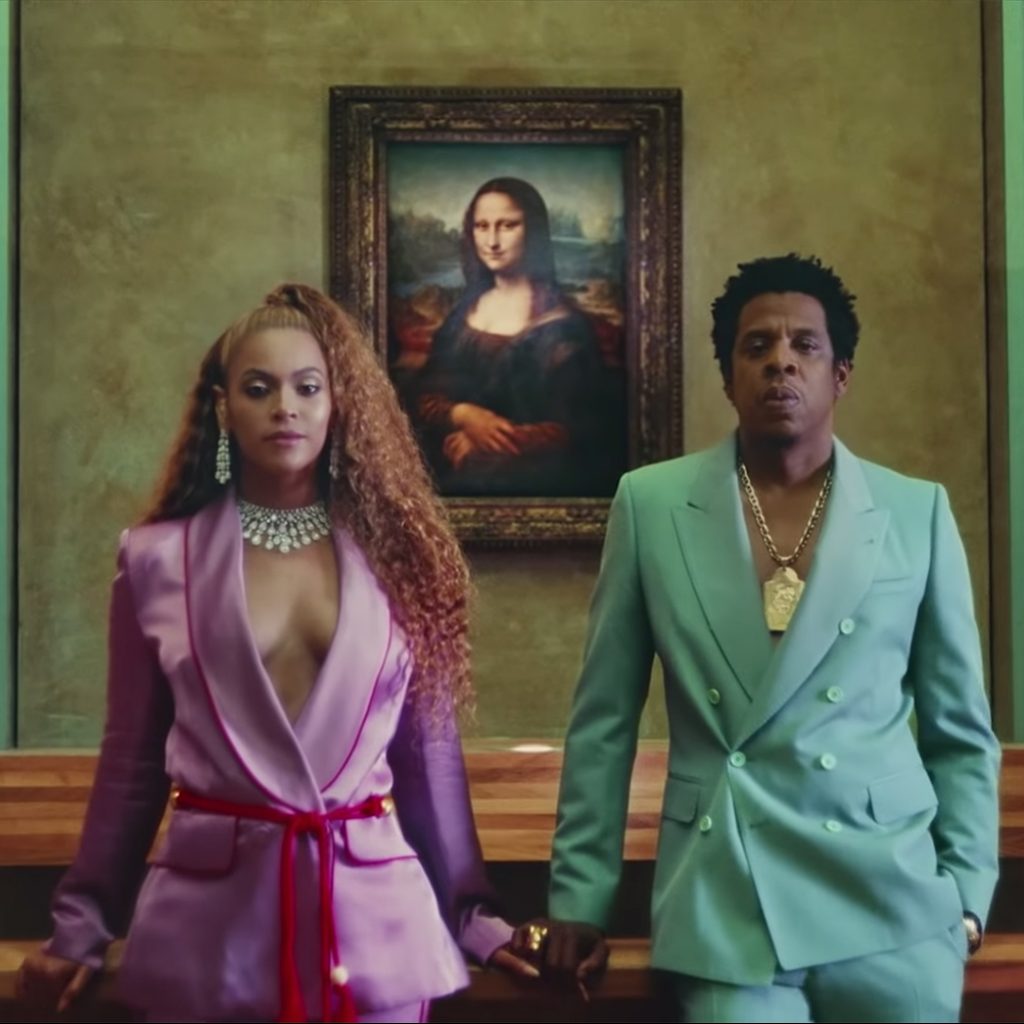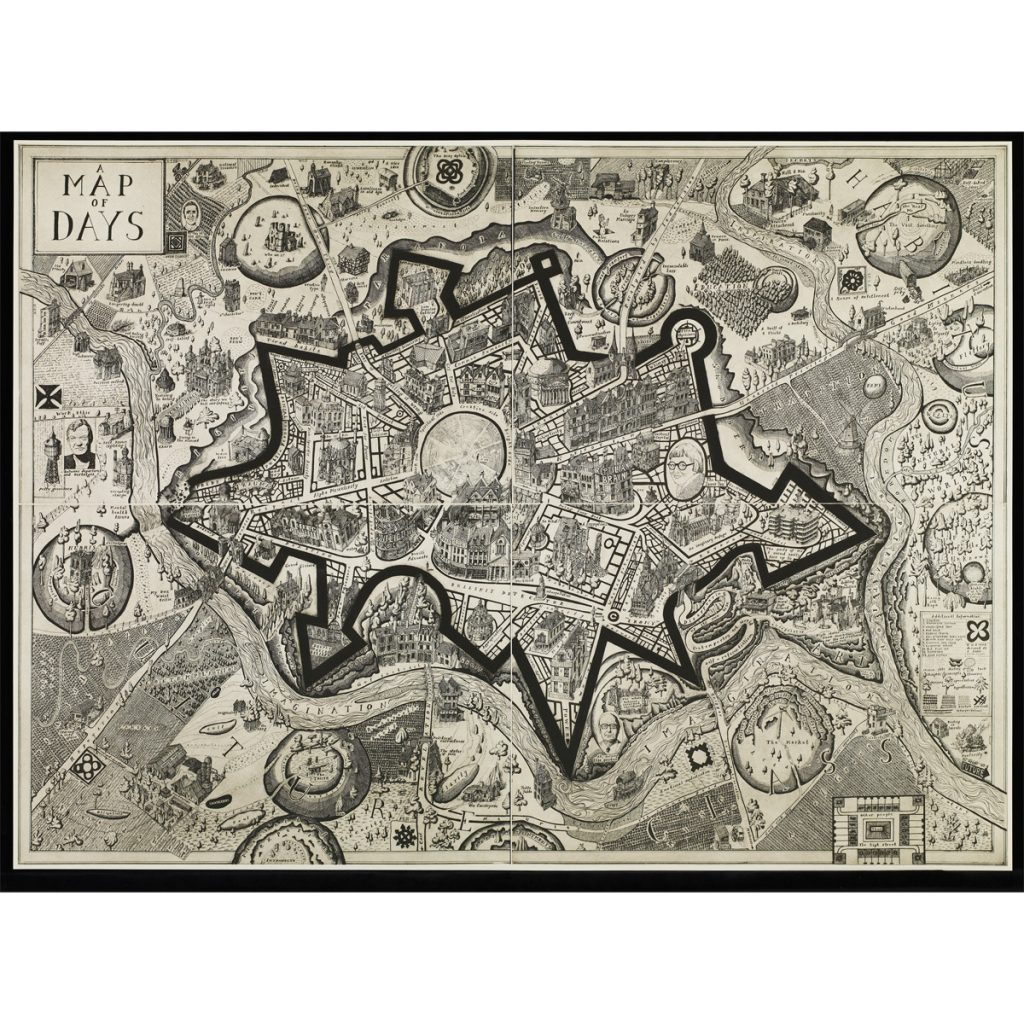Link About It: This Week’s Picks
Computer-generated candy hearts, a dating site for gorillas, an LGBTQ+ plaid from Burberry and more


1. Official Barack and Michelle Obama Portraits at the National Portrait Gallery
Today, at the National Portrait Gallery in Washington, DC, artists Kehinde Wiley and Amy Sherald became the first black painters to unveil commissioned presidential portraits from and at the museum. Wiley’s portrayal of a thoughtful, sitting President Obama falls upon a pattern of vibrant foliage, typical of his style. Baltimore-based Sherald’s work features Michelle Obama sitting, as well, in a beautiful flowing gown. There’s an undeniable magnificence to both official portraits, which the Smithsonian makes clear convey both cultural significance and something “deeply personal.” The portraits will be on view to the public beginning 13 February. Read more at NPR.
2. Fiat Chrysler Launches In-House Classic Car Restoration Program
Fiat Chrysler has announced a new program, “Reloaded by Creators,” aimed at restoring and selling classic cars from their historic roster. Fiat, Lancia, Alfa Romeo, Maserati, and Abarth are among the brands included. And a certificate of authenticity will be issued to cars completed through the program. All money raised from sales goes to scouting and securing more classic cars. Five are on sale now, including a 1991 Alfa Romeo Spider, 1981 Fiat 124 Spider Europa Pininfarina and a 1959 Lancia Appia Coupe.
3. Pottery from Sonoma Wildfire Ash
After the destruction of last year’s Sonoma County wildfires, ceramicist Gregory Roberts launched the Sonoma Ash Project, wherein he turned ash into meaningful ceramics. Roberts asked his neighbors to donate ash from the wildfires they personally experienced. To his surprise, more than 125 people have donated thus far, some leaving notes explaining the value of what they left with him. The diversity of color and texture is astonishing. Roberts goal is to give everyone back a piece of pottery glazed with the ashes they saved. Read more about his process at Atlas Obscura.
4. The Development of Burberry’s Check
As ubiquitous as the brand name itself, Burberry’s plaid check dates back to the late 1910s, when it first lined their trench coats. It was trademarked in 1921. As chief creative officer Christopher Bailey steps down after 17 years with Burberry—a period of time during which he made the heritage brand a global powerhouse and a fit for generations to come—his last gift happens to be a rainbow check pattern. It will be incorporated into his last collection, debuting during London Fashion Week. It’s “dedicated to—and in support of—some of the best and brightest organizations supporting LGBTQ+ youth around the world,” he explains. Read a full timeline of the Burberry signature pattern over at the Guardian.

5. Artists Awarded Millions in 5Pointz Case
A victory for the group of artists whose work was painted over back in 2013, a judge has ruled in their favor in their case against real estate developer Gerald Wolkoff. Sadly, the $150,000 for each of the 45 pieces (a total award of $6.75 million) doesn’t reverse the whitewashing of the iconic 5Pointz building in Queens—which was a “temple” for artists and an inspiring attraction for NYC locals and visitors alike. Jonathan Cohen (aka Meres One) told Artnet, “Judge Block’s decision will change the art form perception for generations to come.” Read more there.
6. CSIRO’s Membrane Makes Sydney Harbor Water Drinkable
Still in the midst of a global drinking water crisis, new developments trigger excitement over the potential for saving lives. Australia’s CSIRO (Commonwealth Scientific and Industrial Research Organization) has created a brand new filtration system centered around a membrane of Graphair, a material produced from graphene. Their testing removed 99% of contaminants—and a specific test on water from Sydney Harbor made that water drinkable. Graphair is purportedly simpler, cheaper and easier to produce and removes pollutants through nano-channels that do allow water to pass. Read more over at Slash Gear.
7. Dating Site for Gorillas Might Keep the Species Alive
From a studbook to a reproductive-management center, many advanced resources have been put into the protection of western lowland gorillas, a species that’s considered critically endangered. One such component happens to be a dating site, built upon an algorithm developed in the late ’80s (which predates human dating sites and apps). It’s all a part of the Washington-based Association of Zoos and Aquariums’s Gorilla Species Survival Plan, and the ever-developing algorithm takes into consideration gene pool, age and even personal chemistry. Read more, including one particularly successful love story, at the New Yorker.
8. Computer-Generated Candy Heart Messages
From “SWEAT POO” to “TIME HUG” and “HOW U HOT,” research scientist Janelle Shane’s computer-generated candy heart messages are unlike any we’ve seen before. Shane (who runs the fascinating blog AI Weirdness) says she collected all the legitimate candy heart messages she could find, and then created a learning algorithm (or “neural network”) for them to mix and match new messages—and the results are nothing if not delightfully odd. Shane “wanted to see how ‘weird’ she could get the generally ‘tame’ candy heart messages to be,” she tells Bustle, where you can read more.
Link About It is our filtered look at the web, shared daily in Link and on social media, and rounded up every Saturday morning.












